Do lions hunt at night? Facts & Behavior Explained
This famous symbol of strength and grace, which lives on vast grasslands and savannas, provokes both awe and intrigue.
African lions, with their magnificent manes and commanding presence, are not only something to behold, but also an essential element of the natural environment.
We shall uncover the secrets of these top predators, from their complicated social structures to their hunting strategies. Discover how these majestic species contribute to the fragile balance of African nature.
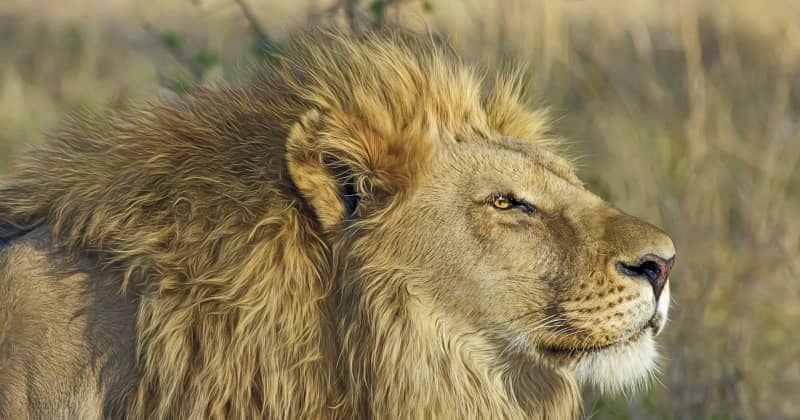 Lionesses appear to favor males with dark manes.
Lionesses appear to favor males with dark manes.African lions are the biggest of the African carnivores.
Color is tawny to sandy brown.
The long tail has a distinctive black tuft at the tip.
The adult males have manes that vary in color from tawny to black.
The head is large with a heavy muzzle.
The pattern of spots at the roots of the whiskers is unique to each individual lion.
|
African lion anatomy |
Male |
Female |
|
Shoulder height |
1,2 meters |
90 centimeters |
|
Weight |
190 kilograms |
130 kilograms |
|
Scientific name |
Panthera Leo |
What habitat do lions prefer?
African lions have no specific habitat preference, so they can be encountered anywhere except in forests.
African lion
Habitats include:
- open plains,
- woodlands,
- thick bush and
- semi-desert.
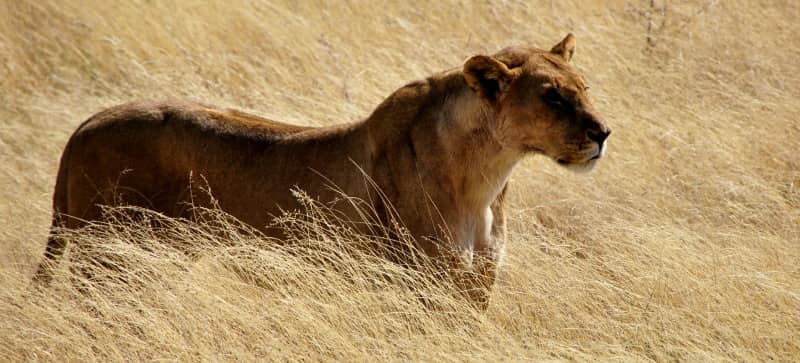
African lions will stick to grasslands, scrubs, and open wood scrubs where there are very few trees because it improves their chances of successfully hunting their prey.
The hunting techniques of lions are most successful in long grass and thick bush.
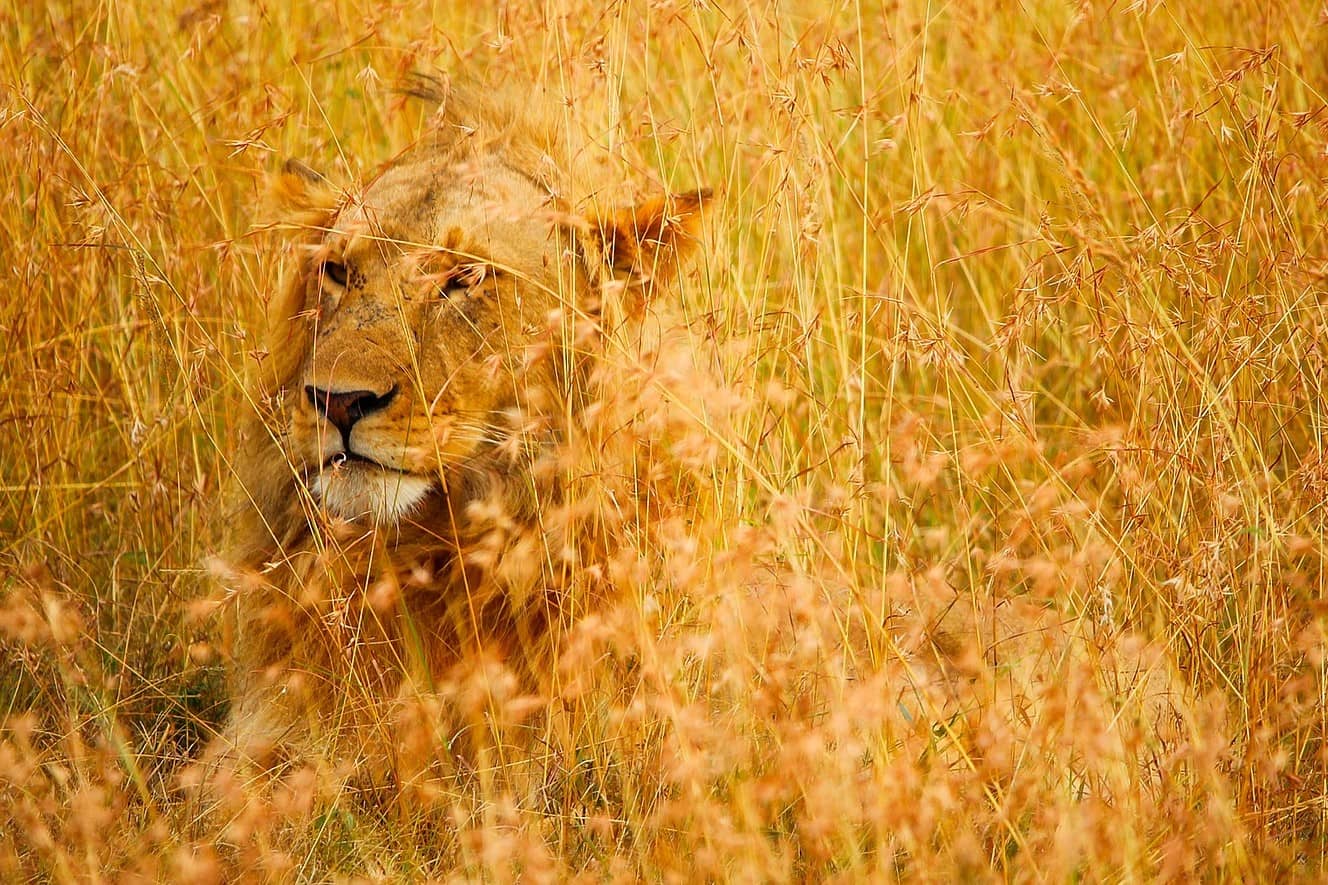
The reason for this is that they are not the fastest runners. They also do not have the stamina to keep their chase of prey going for more than two hundred meters.
They will try to stalk the prey to within twenty meters using the cover they have available.
Why do lions become territorial?
Lion prides with a rich, reliable food supply can afford to be territorial.
When the food supply is unpredictable, pride has huge home ranges that are too large to defend.
In these cases, encounters between lions from different prides are very hostile, but actual fighting is rare.
Both lions and lionesses signal their occupation of an area by scent-marking with urine and by roaring.
Roars can carry for a good 8 km and advertise a lion’s location.
It also shows that an area is occupied and allows pride members to keep track of one another.
What do African lions eat?
They feed on medium and large-sized prey.
Examples of prey are buffalo, wildebeest, zebra, and gemsbok.
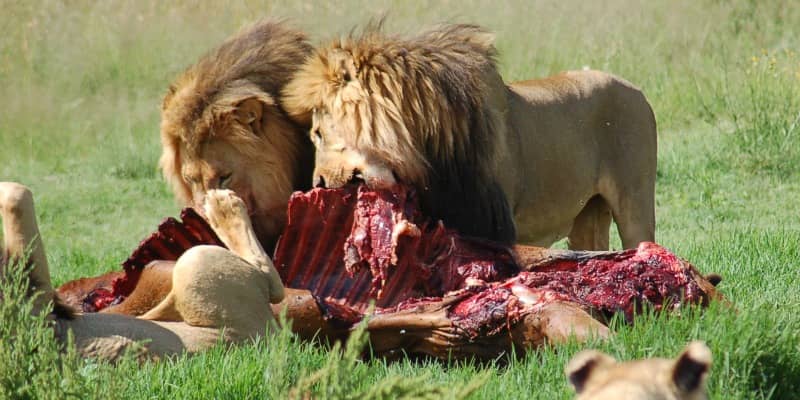
They will however also take an enormous range even down to the size of mice.
Lions can run at about sixty kilometers per hour, which is too slow to catch antelope in an open chase.
Lion attacks are more successful in long grass and thick bush, when the target is alone and when they can stalk close, and on very dark nights.
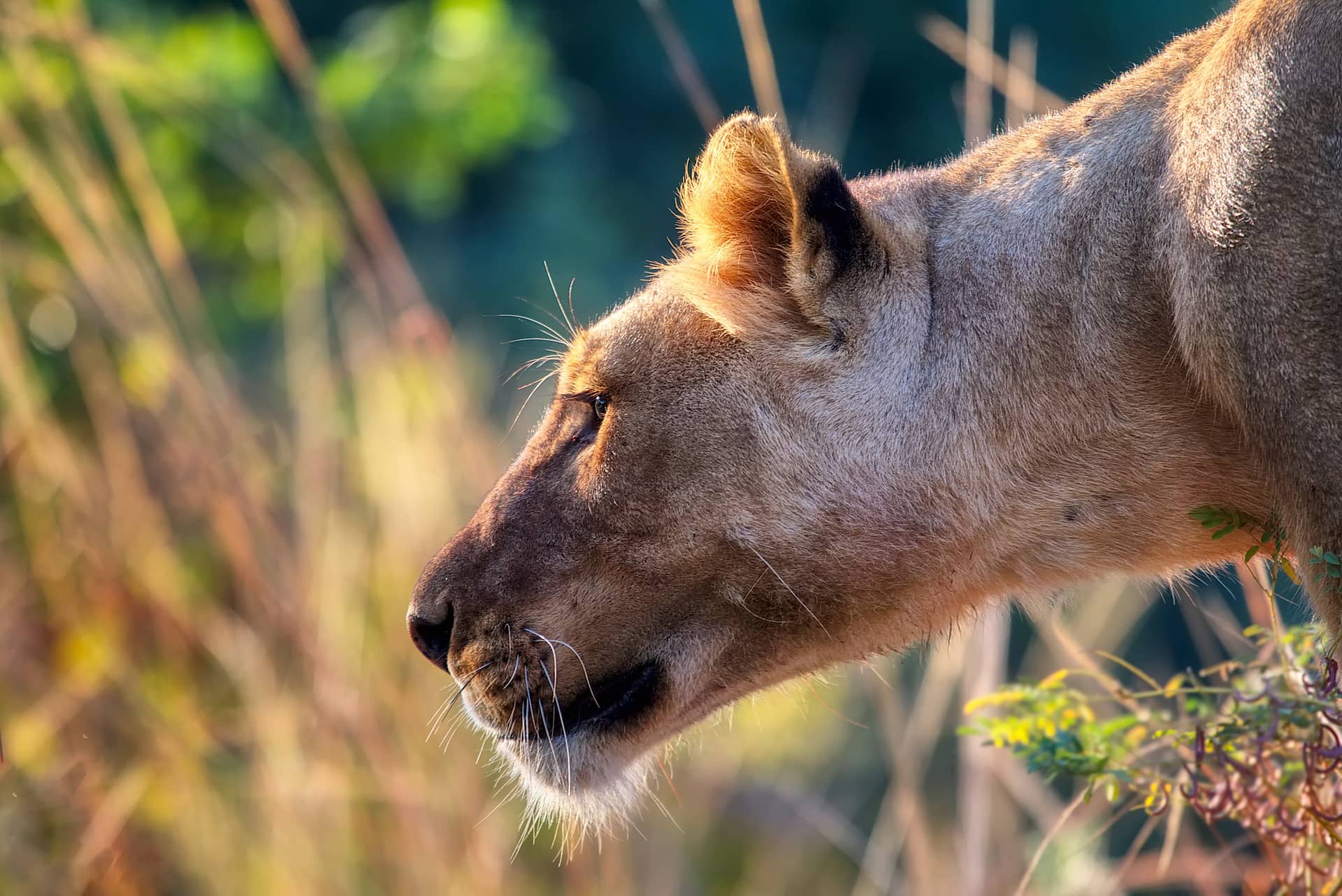 Lion attacks are more successful in long grass and dense vegetation.
Lion attacks are more successful in long grass and dense vegetation.Chases longer than three hundred meters are rare.
The lion usually kills with a strangling throat hold or by clamping its mouth over the muzzle of the prey.
The social behavior of African lions
The basic unit of African lion pride is a family.
The classic lion pride consists of 2 to 12 closely related females and their cubs.
African lions are the only cats that have close-knit social groups and the only ones that regularly hunt in groups.
Usually, 1 to 6 adult male lions that are often closely related to each other attend to the females.
The lionesses form the stable core of the pride, while the males are exchanged every few years.
Lions are the only large cat species in which both males and females live in social groupings. They form teams that collaborate to engage in a variety of social behaviors like cooperative hunting, mutual defense of kills, cooperative territorial defense, and community cub-rearing.
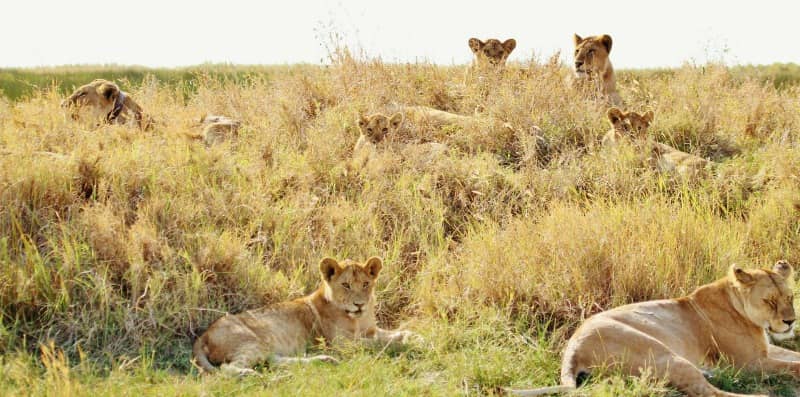
Reasons why lions are so social range from:
- females bonding together to
protect young cubs to
- ensuring adequate numbers when capturing large and potentially dangerous prey.
If a small group of males stays together, they can drive out the resident males of pride and will so take over the females.
These displaced male lions are not likely to live long since they no longer have the luxury of females available to hunt for them.
After a takeover, the new males will also kill any lion cubs in the pride.
How do African lions breed?
When it comes to courtship and breeding, a male and female who moves away from the pride are mating, which guarantees constant action.
A lioness becomes sexually receptive for two to four days, about once every two years.
The pride males detect her condition by scent.
Lions may mate hundreds of times during the three- to four-day estrous of the female.
Mating occurs about four times an hour over a period of one to two days and lasts for less than a minute each time.
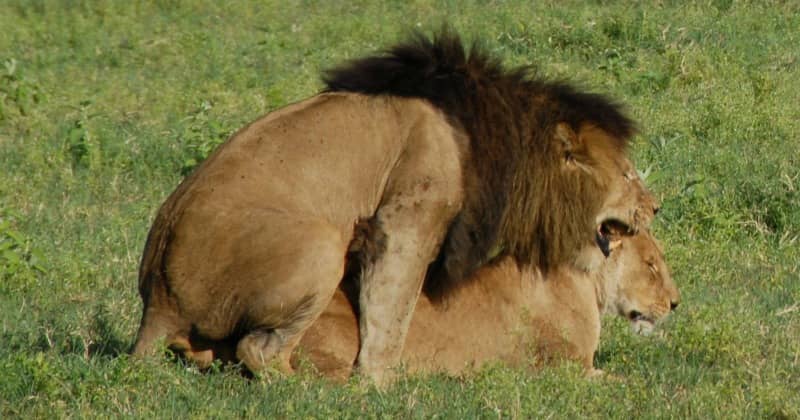
The high failure rate of mating accounts for this prodigious frequency. Only roughly one in every three copulations produces cubs.
By being difficult to inseminate, females are ensuring that they conceive a healthy male.
African Males' lions play a critical role in protecting cubs from intruding males.
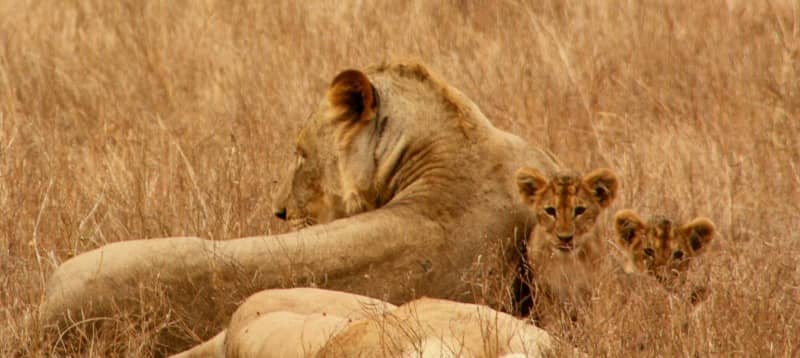
For the lioness, it provides a level of assurance in that the more
persistent the male lion is, the greater likelihood that the male will
Stick around until the cubs are grown.
Male lions within a pride do not compete for mating.
The female may turn her attention to one of the other pride males as each loses interest in her.
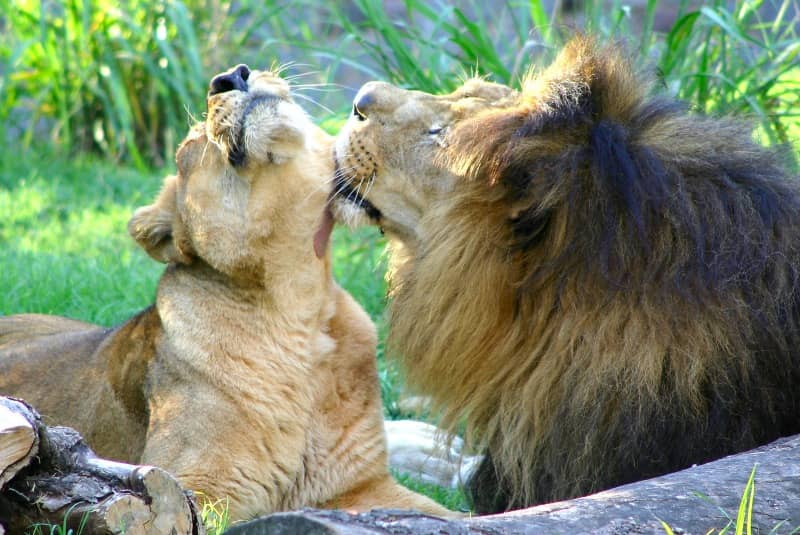
This abundance of sexual opportunities keeps male rivalry at low levels within a pride.
Savage and sometimes fatal fights can however occur if an intruding male is encountered.
Lion cubs
Did you know that after a group of African lion males takes over a pride, they will kill all lion cubs currently in the pride?
After mating, you may see both male and female roll on the ground, groom, or rub against each other.
The behavior of an African lion
To avoid the heat of the day African lions are most active at night.
Lions sleep away most of the day because it is usually too hot to hunt.
Sunlight also foils most efforts to sneak up on prey.
How do African lions hunt?
The hunting style is a classic feline with a stalk to within twenty meters and a chase that is usually not longer two hundred 2two hundredmeters.
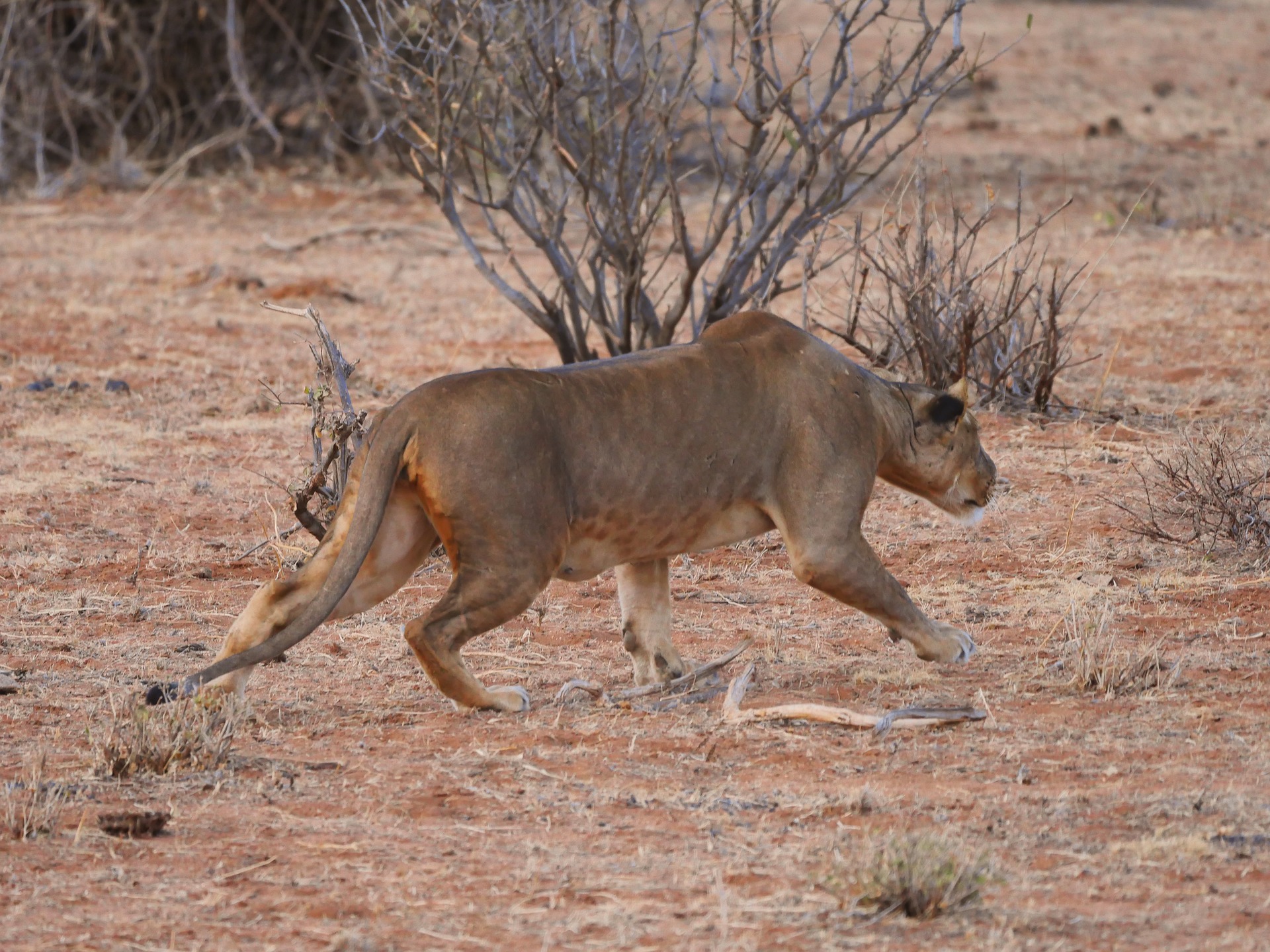
The prey is pulled down and usually killed with a suffocating bite to the throat.
They often hunt in groups. This will depend on the difficulty of the hunt.
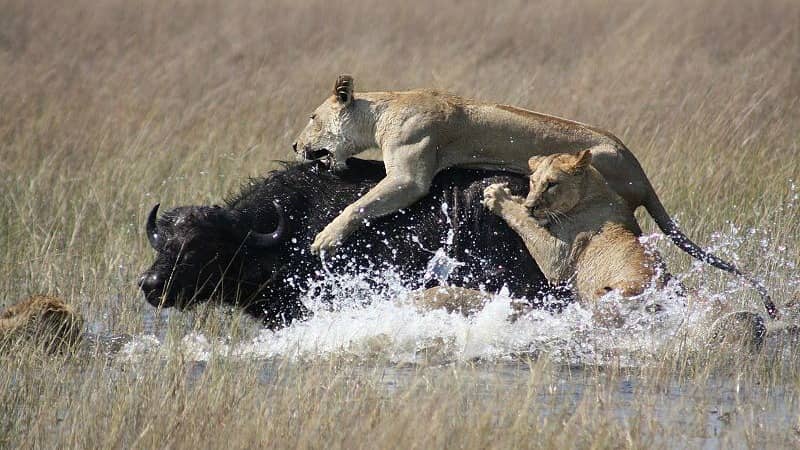
If it is a large, difficult prey, they will need to cooperate to bring it down.
Cooperative hunting increases their success rates.
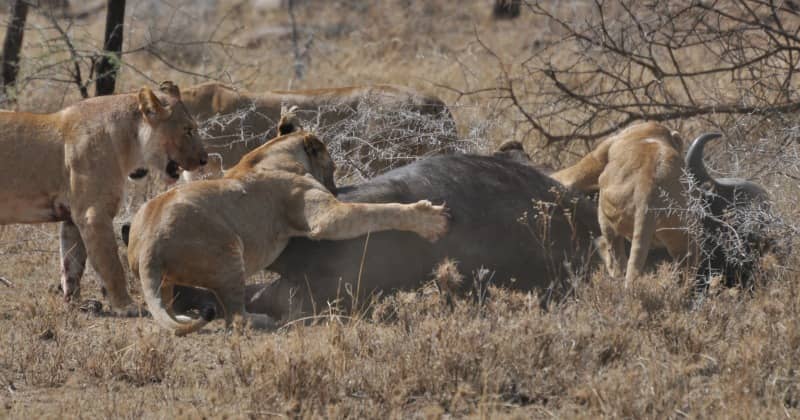
The success rate when hunting blue wildebeest in the Etosha:
|
Single lioness |
Group of 7 lions |
|
0,28 kills per hunt |
0,75 kills per hunt |
They are extremely aggressive while feeding—snarling, pawing, and snapping at one another.
The pride Males dominate the females and may drive them off the kill.
Food is the energy required for survival.
The only way to secure food is to fight for it which means aggression is the norm at feeding time.
Is the African lion male a lazy and useless hunter?
In many prides, African lion males do not hunt.
The reason for this is that their manes and large size makes them more conspicuous and less successful in the hunts than lionesses.
The result is that these males live off the efforts of their females.
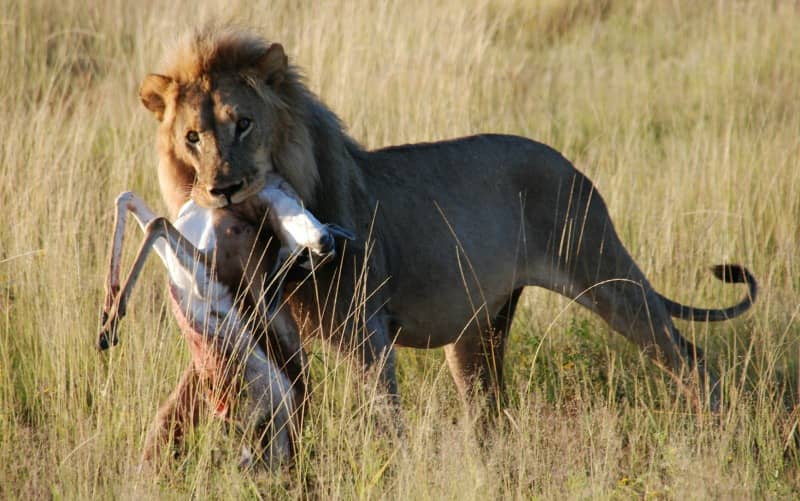
They use their dominant status to take food from the females.
This does not however mean that male lions lack hunting skills.
Males must fend for themselves both before they take over a pride and after they have been displaced from one.
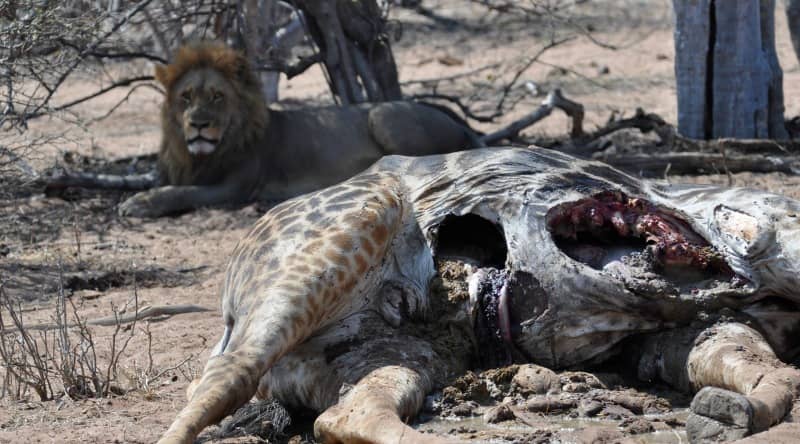
Young males may form small bachelor groups that hunt together.
Lone males are restricted to smaller, easier prey such as warthogs and porcupines and the young of other species.
When you see old, solitary males that are peppered with black spots it is most probably scars from porcupine quills.
Is the African lion endangered?
The estimated population of lions in Africa at the end of 2014 is estimated at about 34,000.
Important to understand is that this means about 50 percent of them have disappeared during the last three decades.
 African lion endangered status facts
African lion endangered status factsIn parts of West Africa, they have nearly disappeared totally.
Loss of habitat, persecution in retaliation of preying on livestock, bushmeat poaching and trophy hunting are the main threats to lion conservation. Lately there is also an additional threat to lion conservation: the targeted poaching of lions for body parts.
Lions serve a key role in maintaining a healthy population balance among other species, particularly herbivores like zebras and wildebeests, which determines the quality of grasslands and forests.
The African lion has for an exceptionally long time been a symbol of strength, nobility, and power.
Now their conservation status indicates that they need our help to survive.




